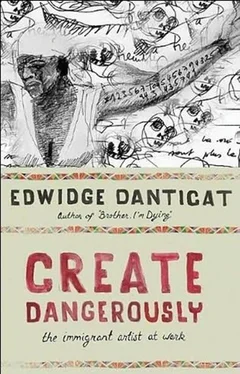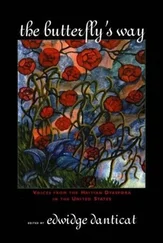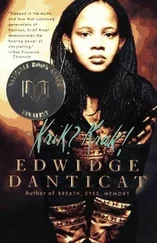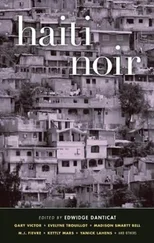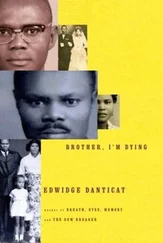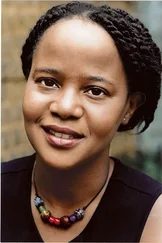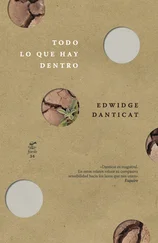Because she bore her father’s name but for a single vowel, there was always the possibility that someone would mistake the novelist daughter for the agronomist/journalist. So the novelist daughter at first used her nickname, J. J., on the cover of her books.
“One day they’ll introduce me as the father of Jan, the novelist,” her father said. He loved her novels. He said that one of them reminded him of Proust, his favorite writer. “If I weren’t your father,” he said, “I’d write a review, but people would think me biased.”
Then there was the assassination and her being unable to write because everyone was saying to her, “You should write about your father,” which she eventually did.
For her part, during the final months of her life, Marie Vieux-Chauvet was researching and mapping out an epic novel called Les Enfants d’Ogoun (The Children of Ogoun), Ogoun being the Haitian god of war. Unfortunately, Marie Vieux-Chauvet died before completing more than a few pages of this much hoped-for book.
“I would like to be sure,” she writes in Love , “that Beethoven died appeased that he had written his concertos. Without this certainty, what would be the point of the painful anxiety of a Cézanne searching for a color that escapes him? Or of the anguish of a Dostoyevsky grasping at God in the thoughts swarming within the hellish complexity of the soul!”
I too would like to be sure that Marie Vieux-Chauvet died appeased that she, like her living sister novelist/memoirist Jan J. Dominique, had written, passionately, fearlessly, dangerously, the books that she did. The more I write myself, the more certain I am that she did.
I Speak Out
Alèrte Bélance: I only have a stub where my arm used to be, and the fingers of my left hand have been severed; I can’t close it. That hand can’t do anything for me. That’s why I say to you: consider that I always lift my face up, I speak out… Look at my martyrdom from when the wicked ones kidnapped me and took me to the killing fields… Hear my story, what I have experienced.
We were speeding through the Lincoln Tunnel toward New Jersey to visit a Haitian woman named Alèrte Bélance. Alèrte was the latest casualty of the 1991 military coup d’état in Haiti. We-the director, the producers of the documentary, and I-had heard about Alèrte through a refugee women’s organization in Brooklyn. We were told that she had been arrested by men belonging to a paramilitary group working for the junta that had led the coup and had become the de facto leadership of the country. Five of us immediately jumped into a small car and, with a trunk full of video equipment, headed for the public housing project in Newark where Alèrte, her husband, and their three children were living. Our documentary was about Haitian torture survivors and we hoped that she would tell us her story.
As we entered the sparsely furnished apartment on the top floor of the six-story building, we were greeted by two young girls dressed in ruffled pink dresses and matching bows in their hair. Alèrte’s son was sitting on a large orange sofa in the middle of the living room. He was a small boy and it was hard to tell whether he was older or younger than the girls, who both appeared to be around ten. The boy never smiled, which made me think that he was indeed older and understood a lot better than his sisters did what had happened.
Alèrte’s husband, a youthful-looking, goateed man, carried in a few chairs from the kitchen for us. Then Alèrte emerged from the bedroom. She was a small woman, her dark face sunken on one side where a machete had nearly chopped off her cheekbone. She was in her late twenties, but looked twice as old, the machete scars and suture marks like tiny railroad tracks leading toward her chin. She was wearing a green blouse, a flowered skirt, and a dark knit cap on her head, and as she limped toward the couch she greeted each of us with a nod.
Somewhere downstairs a baby was crying.
“These apartments are sometimes used for battered women,” she said in halting Creole.
Still, her voice was a lot clearer than we had expected, since during the attack her tongue had been cut in two.
While lingering on her voice, it was also hard not to stare at her right forearm, the pointy black stub filled with keloid scars. Leading to the tip were more machete scars, as though the person-the people-who had chopped off her arm had tried extremely hard to do it. You could not look at that arm and not wonder where the rest of it was.
My brother Kelly also has a missing forearm. Unlike Alèrte, he was born that way. I am not exactly sure what happened with Kelly, but when my youngest daughter, Leila, was born with a few small indentations in her left earlobe, her pediatrician told me that sometimes in the womb, elongated tissue called amniotic bands wrap themselves so tightly around fetal tissue that they can amputate a fetus’s arm or leg. My Vodou-and Santeria-practicing friends, however, tell me that when a person is born missing any piece of flesh-be it a limb or otherwise-it means that the person has lost a twin in the womb and that lost twin has put a visible mark on the living twin.
At last, I’d thought, I had two possible answers to the mystery that was my beautiful brother. Kelly’s missing forearm had dissolved inside my mother, becoming a part of the tissue, and spirit, that had helped create him. Alèrte’s missing forearm had dissolved in a mass grave, becoming a part of the country that had helped create her.
Alèrte Bélance: They sliced me into pieces with machete strokes. They cut out my tongue and my mouth: my gums, plates, teeth, and jaw on my right side. They cut my face open, my temple and cheek totally open. They cut my eye open. They cut my ear open. They cut my body, my whole shoulder and neck and back slashed with machete blows. They cut off my right arm. They slashed my left arm totally and cut off the ends of all the fingers of my left hand. Also, they slashed my whole head up with machete blows.
Once the lights and cameras were set up, the director, my friend Patricia Benoit, tried to begin gently.
“ Kijan wye? ” How are you? Patricia, who was born in Haiti and moved to the United States with her parents when she was six, has a soft, hesitant, but cajoling voice in Creole. Fluent in English, Creole, and French, she is not only trilingual but also tritonal, having a distinctive timbre and pitch for each language she speaks. Patricia has often filmed in Haiti and has seen other victims of other horrors, so when she said to Alèrte, “ Kijan wye? ” it did not sound like small talk, especially in this nearly empty room so far from all of our homes.
Alèrte settled on the couch and with her semifunctioning hand began tugging at the dark knit cap on her head. She removed the cap and underneath were more scars and a military-style buzz cut. She quickly put the cap back on.
“We’ll do this any way you want,” Patricia said softly, “but you look nice with your cap off.”
With her cap off, even with the machete scars so visible, Alèrte’s injured cheekbones emerged. Her eyes had a glint of onyx and she had a coy smile that came from only one side of her mouth.
“I look like a boy,” she said, nervously rolling the cap in her hand.
She asked her husband to get two faux pearl earrings from a box in the bedroom. When he came back, he leaned down and, because she could not, put the earrings on her ears. Then he sat down next to her, as though to shield her from the camera.
What did you do for a living in Haiti?” Patricia asked Alèrte.
“I sold food in the market,” she said.
Her husband, she said, was a welder. He was also involved in some neighborhood committees that organized rallies for Jean-Bertrand Aristide when he was a presidential candidate.
Читать дальше
